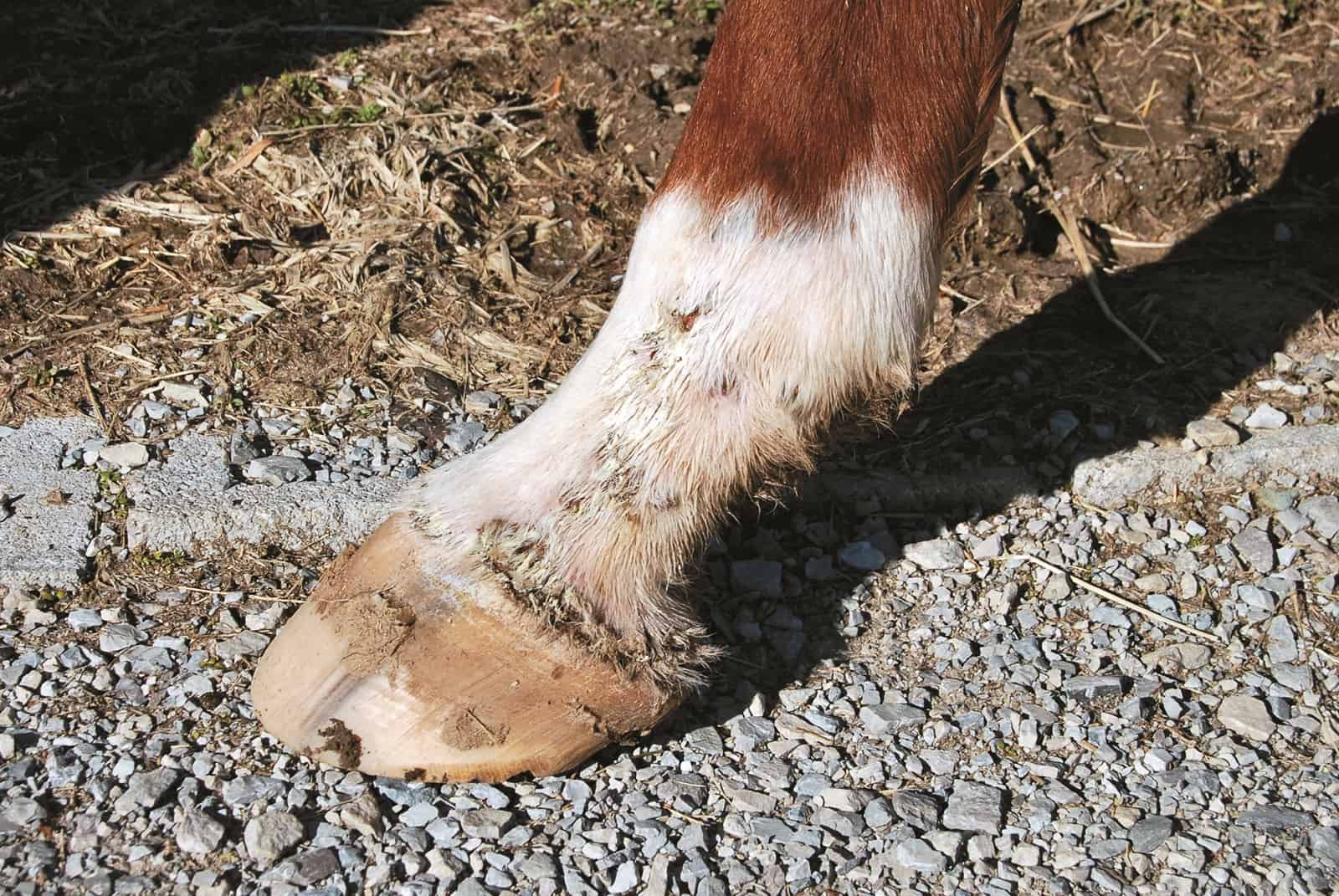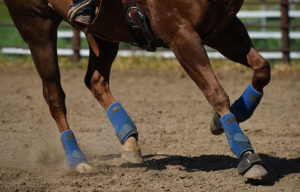Understanding Scratches

April showers might bring May flowers, but they can also lead to skin problems such as scratches. Also called pastern dermatitis, dew poisoning, greasy heel, or mud fever, scratches is not a condition itself; it’s a description of a problem commonly seen on a horse’s lower limbs. Scratches is caused by a variety of skin conditions including viral, bacterial, fungal, or parasitic infections. Horses in excessively wet or muddy environments are at greater risk of getting scratches.
What Is It?
According to The Merck Veterinary Manual: “Scratches is a chronic, seborrheic (flaky skin) dermatitis characterized by hypertrophy (enlargement of the skin cells) and exudation (oozing) on the caudal (rear) surface of the pastern and fetlock. It often is associated with poor stable hygiene, but no specific cause is known. Heavy horses are particularly susceptible (potentially because their feathered legs can trap dirt and moisture), and the hind limbs are affected more commonly.”
It has also been noted that horses with light-colored legs or white socks are more susceptible to getting scratches
Create a free account with TheHorse.com to view this content.
TheHorse.com is home to thousands of free articles about horse health care. In order to access some of our exclusive free content, you must be signed into TheHorse.com.
Start your free account today!
Already have an account?
and continue reading.
Written by:
Chad Mendell
Related Articles
Stay on top of the most recent Horse Health news with











